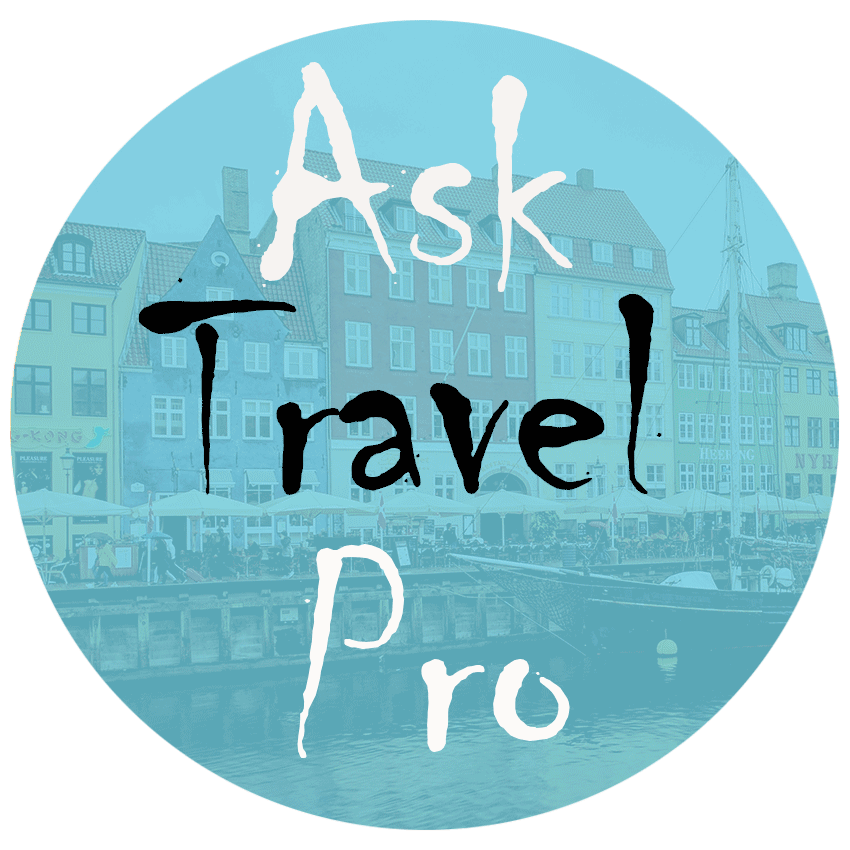I've often been asked what there is to see in Czechia outside of Prague, its cosy and beautiful capital. Well, given that the Czech Republic is situated in the heart of Europe, and the history of this region stretches back for many centuries, there are definitely many other places worth visiting: medieval castles, hot spring spas, ski resorts, picturesque small towns, glass blowing factories, breweries established back when America was not even on the map yet, and so on. So please, do not restrain yourself by visiting Prague only!
One of the places that I highly recommend is Kutná Hora: a small town 70 km from Prague that, at its peak, used to be the second most important city after the capital in the Kingdom of Bohemia. The settlement has been mentioned in records since about the 10th century, but its development had soared up in early 1300s when silver was discovered and a royal mint was established. Silver was mined and coins were pressed in the same place for nearly three hundred years. As much as Prague was called the Golden City, Kutná Hora went by the name of the Silver City.
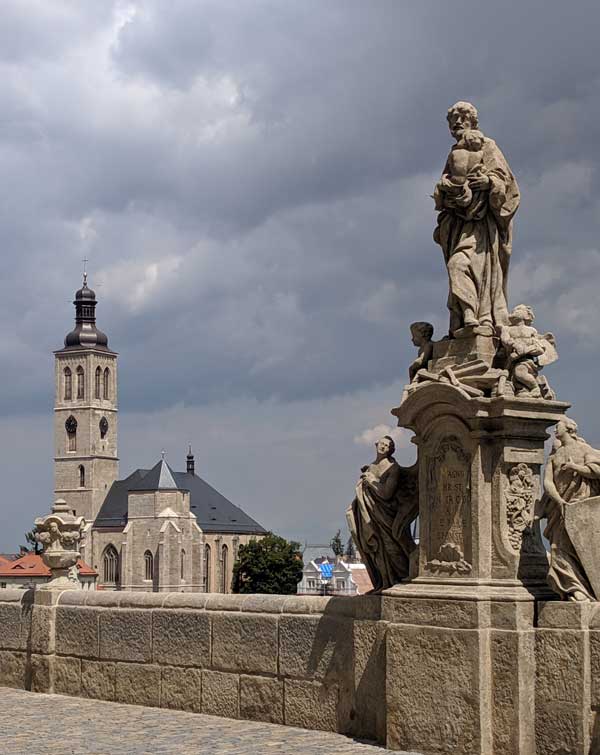
In the time since being known as one of the favorite residences of Bohemian kings, it has changed hands several times, took a part in the Hussite wars (Battle of Kutna Hora in 1420), it withstood fires and floods.
But everything comes to an end... After about three centuries of mining, the silver was mostly taken out. The richest mine was heavily flooded in 1546, and the Thirty-Years War added to the destruction of mines and contributed to the decline in the population of the city. Mines were closed and the city gradually decayed. However, in the face of a few big fires and a significant population drop, Kutná Hora survived all circumstances and remained on the map and on the tourists’ lists as a UNESCO Heritage Site, home of St. Barbara’s Cathedral, the Sedlec monastery and other historical landmarks.

Once abandoned, the silver mines are now one of the main attractions in Kutná Hora. To attend a tour, come to the Hradek: Museum of Czech silver in the historical center, which is pretty close to St. Barbara’s Cathedral. Tickets are sold for certain time slots. It's advisable to buy your tour ticket first and then visit the cathedral or museum of printing while waiting. Tours are offered in 13 languages and get sold out quickly.
I personally find these tours very informative and engaging. First, a group is gathered at the museum yard and introduced to the history of mining and coin making.
Then you will proceed to the basement down steep and narrow stone stairs, you’ll take a look at the chamber and will return to the yard. This way, if someone decides that they feel claustrophobic in the basement, they can withdraw from the tour. It's better to know in advance, because when you descend into the mine, you'll spend some time there and boy, those tunnels sure are narrow and dark!
You'll be given a gown to wear over your clothes so they stay clean, and a hard hat that will take all the damage from the bumps underground. After a short walk along the city streets, you'll come to the mine entrance. From there you are going to proceed in a single file line with one tour guide in front and another closing the group. Be prepared to squeeze through narrow tunnels and duck your head as ceilings are quite low in some places. There are a few bigger chambers where the entire group can gather and a guide will narrate some interesting facts about mining.
During the tour, at first I thought: “How fun it is: to walk in tunnels like a hobbit when he walked through a goblins’ cave!” After 10 minutes I was not so sure I'd like to be a hobbit. And I’d like even less to be a silver miner down here centuries ago. They would descend into these tunnels for ten or twelve hours: candle and chisel in one hand and sledge-hammer in other, hacking at the rock in a narrow chamber, losing all sense of time, wet and cold under tons of stone.
But this job was relatively well paid, and only adults over sixteen years old were hired. There were no IDs at those times, so sometimes teenagers of 14 or 15 years of age could have become miners if they looked old enough. What one wouldn’t do to feed their family...
To me, this tour was very interesting and somewhat adventurous, however it also felt very safe. Oh yes, by the way, children are allowed on the tour only if they are over 6 years old.
After walking underground, it's nice to find a place in one of the many nearby restaurants, sit back, relax, and enjoy the hearty and tasty Czech food. Not too hungry? Beer is always a good refreshment! And in case you do not know: it is customary for Czech restaurants to display a banner with the logo of the brewery whose product is served there. Oftentimes there are couple of brands offered, and a few varieties of beer within the same brand.
Knihtiskárna (Book printing)
When we were in Kutná Hora during the summer of 2019 we were lucky to run across the newly opened museum of printing. It is definitely a must-see! The museum is quite small, with three rooms of exposition. But all the exhibits are in full working order. There is a beautiful collection of printing presses, types, and other tools, some of them as old as 180 years. In each room, there is an audio guide with very detailed explanations in Czech, English, German and Russian. It was very educational and engaging. And you can even print a postcard with your own hands using a mechanical press! The lady who was in charge (she turned out to be the mother-in-law of the museum's owner) was very kind and knowledgeable, she demonstrated to us how many of the tools work and look in action, and we felt warmly welcomed in this very engaging hands-on museum. To find out more visit their website: www.muzeumkutnahora

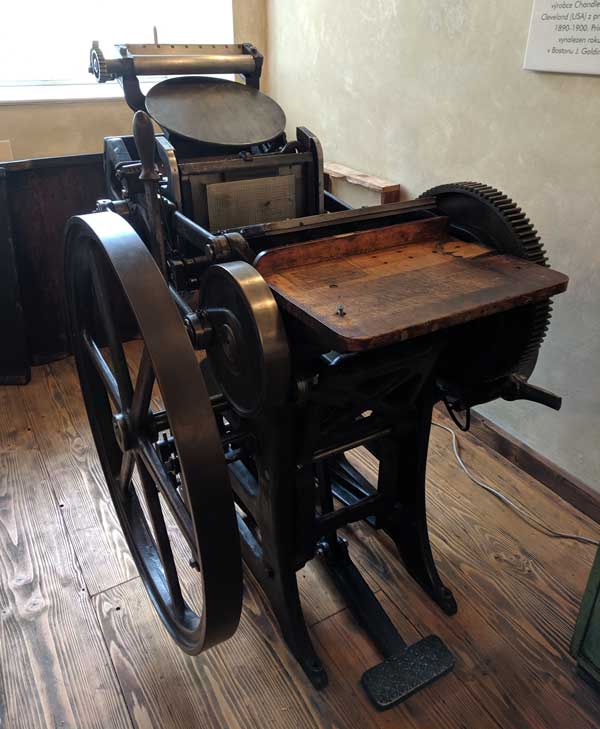
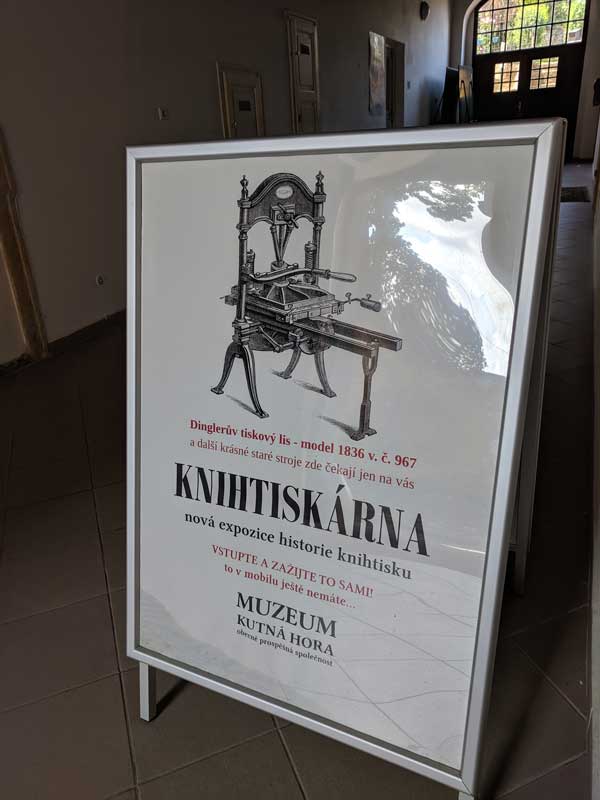
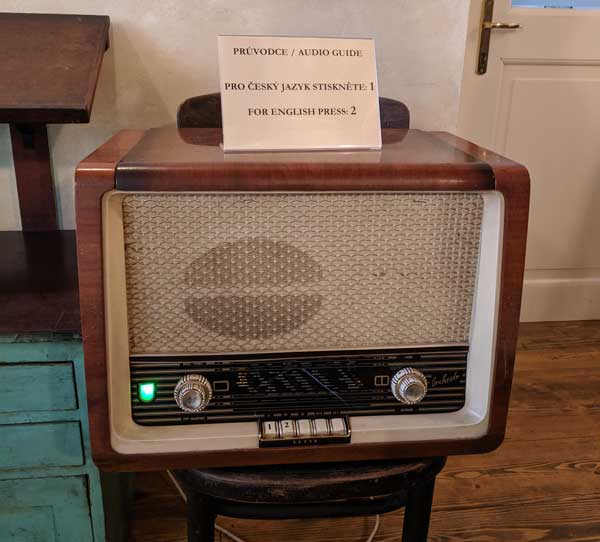
Sedlec ossuary in Kutná Hora
It might not be exactly what one would call a tourist attraction, but Sedlec Ossuary is definitely not any ordinary chapel. It's all decorated with human bones and sculls. Chandeliers, garlands, even the House of Schwarzenberg's coat of arms are made with the bones of family members. Over 40,000 human skeletons were used for this purpose.
The history of Sedlec Ossuary dates back to the year 1278. At that time the abbot of the Sedlec Monastery had traveled to the Holy Land and brought back a handful of soil from Golgotha. It was sprinkled over the cemetery, thus making it holy land as well. When news about it spread to nearby settlements, more and more people requested a burial in this land. In the 14 and 15th centuries the cemetery expanded as many people had died due to the plague epidemic and Hussist wars. The land was literally full of skeletons, an estimated amount of about 40,000. In the fifteen century there was no room left within the existing cemetery boundaries and no place to expand. So the ossuary was built, and old remains were moved to a crypt in order to make a room for the newly buried.
In 1870 the lower chamber of the Sedlec Chapel was rebuilt and instead of just storing bones in a crypt, the decision was made to arrange the bones in a decorative manner. Most of the work was done by František Rint, a local woodcarver. He first came up with the idea of a bone chandelier, and after that came an altar, pyramids with angels on top, and many other decorations.
Strange as it is, this is not a unique catholic chapel of its kind.
There are at least eight of these ‘bone chapels’ in the world, including San Bernardino alle Ossa, Milan; Skull Chapel, Czermna, Poland; Capela dos Ossos, Portugal; Monastery of San Francisco, Peru; Medieval Ossuary, Spain; St Michan Church, Ireland.
When visiting the Sedlec Ossuary, please keep in mind that it is not purely a tourist attraction, but rather a sacred religious place for many people. Any kind of commercial photography is prohibited in the ossuary, and appropriate behavior is expected.
There are others places of interest and museums in Kutná Hora, including Museum of Chocolate, Alchemy Museum, GASK Museum of modern art.
